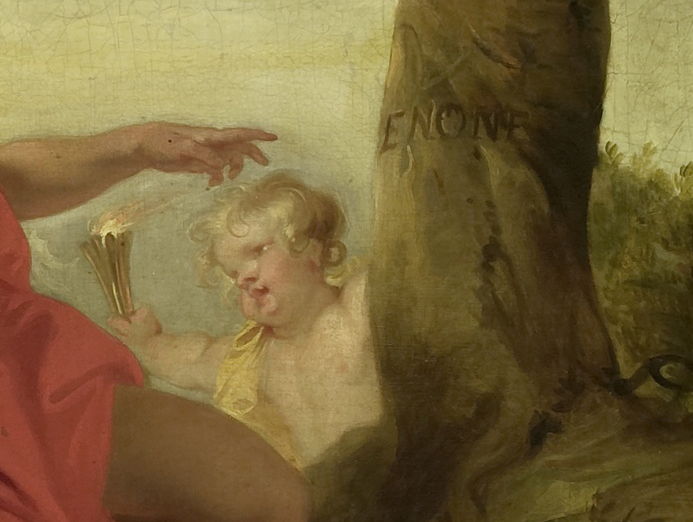When the Titanic sank on 15 April 1912, two close associates of President Taft died: Archibald Butt, the President’s military aide, and Francis Davis Millet, a journalist and painter. They’re now commemorated in the Butt-Millet Memorial Fountain in President’s Park, Washington D.C.
Millet had been a central figure in American fine arts. A trustee of the Metropolitan Museum of Art, a member of the advisory committee for the National Gallery of Art, a co-founder of the School of the Museum of Fine Arts in Boston, deeply involved with the American Academy in Rome, and a founding member of the US Commission of the Fine Arts. There seemed little in the East Coast art establishment that he wasn’t involved with.

Millet’s Reading the Story of Oenone (c 1883) seems at first sight to be following the drift into the Aesthetic Movement that had become popular in Europe at the time. Four beautiful women in classical robes are engaged in a little dolce far niente, doing sweet nothing. That’s hardly an explanation, though: three of them are certainly involved in the reading out loud of an obscure story. So who was this Oenone, and what about her story could possibly be worth reading aloud in this way?
Œnone or Oinone, to be pedantic over her name, was the first wife of Paris (or Alexander), son of King Priam of Troy, who also remains famous for the Judgement of Paris, and his central role in bringing about the Trojan War, and its consequences. Look her up in Homer, or other early sources, and you’ll find no trace of either her name or her supposed role. Her story wasn’t fully told until the compilation of the Bibliotheca by (Pseudo-)Apollodorus some time between about 50 BCE and 150 CE: more than 500 years after Homer.
Oenone was an Oread, a mountain nymph, near Mount Ida, the peak to the southeast of Troy. Paris was abandoned as a baby there, because of the dire predictions that he would bring doom to the city, but was rescued and brought up by local shepherds. When he was living there as a shepherd, the young Paris met and fell in love with Oenone, and they lived together as husband and wife, raising a son named Corythus.
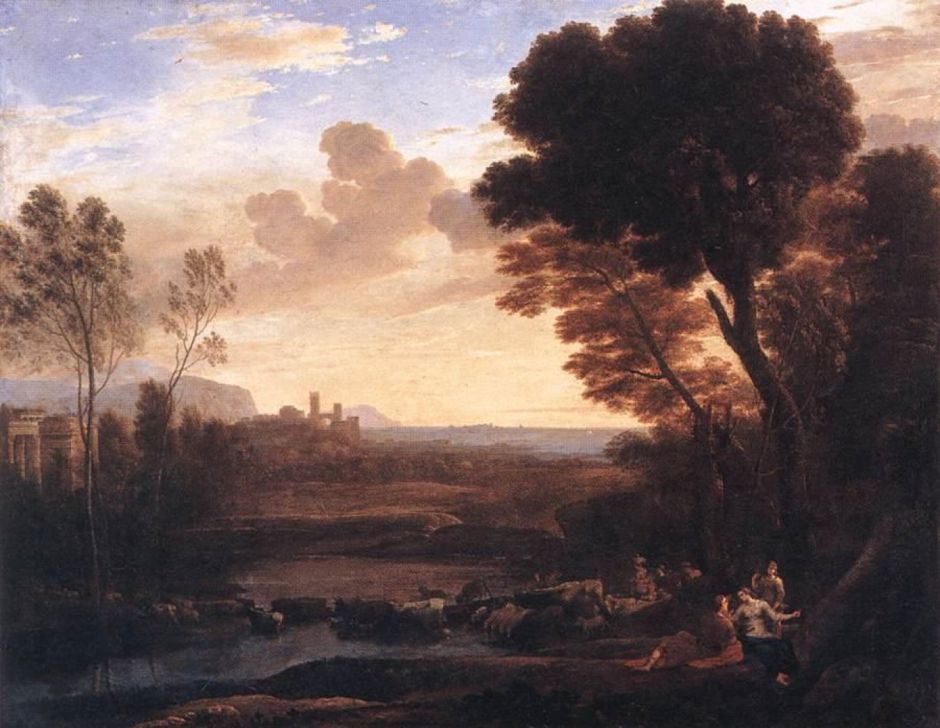
Claude Lorrain’s Landscape with Paris and Oenone, also known as The Ford, of 1648 shows the family living with their livestock in the countryside, with the city of Troy in the distance. In reality, if the modern location of the ruins of Troy is reasonably accurate, those lofty walls and towers should be twenty miles away, far over the horizon. This was painted as a pendant to Claude’s Ulysses Returns Chryseis her Father.
One consistent detail given in accounts of Paris and Oenone’s relationship is that he carved her name on the trunk of many trees, as a mark of his love for her. Ovid expresses this in his imaginary letter from Oenone to Paris, written after their relationship had ended:
The beech-trees still hold my name with your carving,
And I read “Oenone,” written by your blade.
And as much as those trunks grow, so much my name increases.
Rise up, and grow straight with my glory!
Poplar, live, I pray, planted by the river bank
With, in your furrowed bark, this verse:
“If Paris can still draw breath when he has abandoned Oenone,
Then the waters of the Xanthus shall flow back toward their source.”
Ovid also claims that Paris inscribed a poplar tree with the prophesy that, should Paris ever leave Oenone while they were both alive, the waters of the river Xanthus would flow backwards, a sign of the impossible.
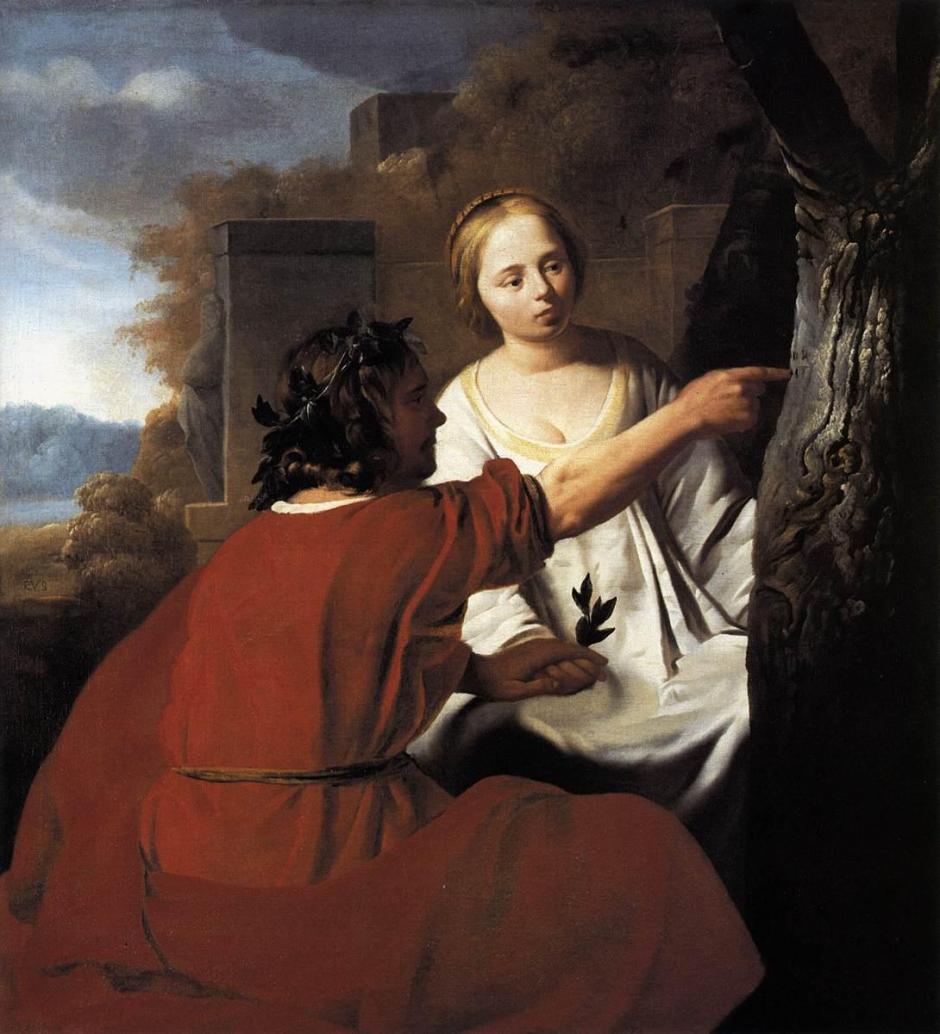
Therefore one distinctive feature of most paintings depicting Paris with Oenone is an inscription carved into a tree trunk. In Reyer Jacobsz van Blommendael’s Paris and Oenone (c 1655), Paris appears to be reading one to Oenone.
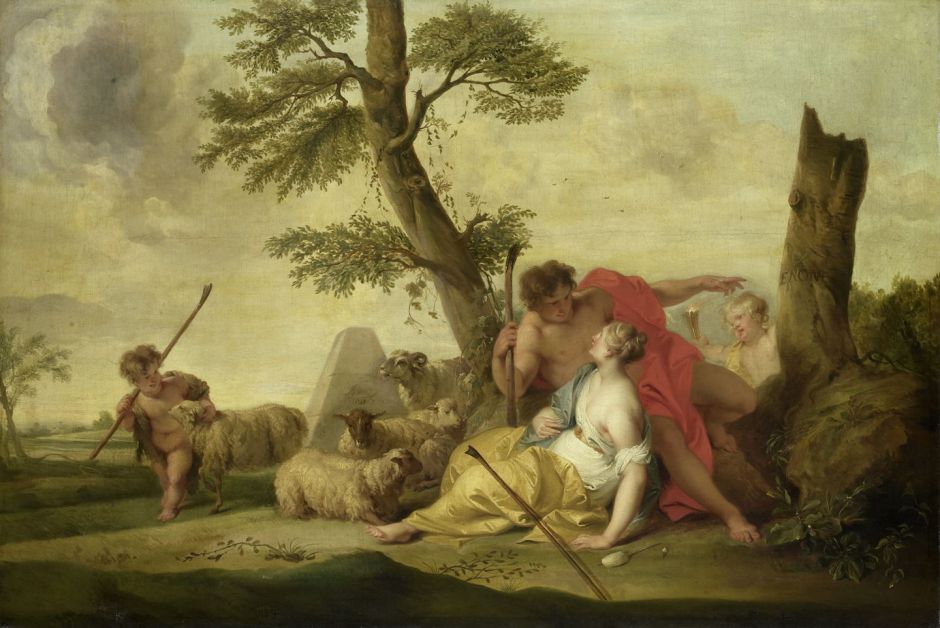
Jacob de Wit was even more explicit in his Paris and Oenone of 1737, where the lovers, suitably accompanied by a couple of amorini and their flock of sheep, recline by a trunk so inscribed.
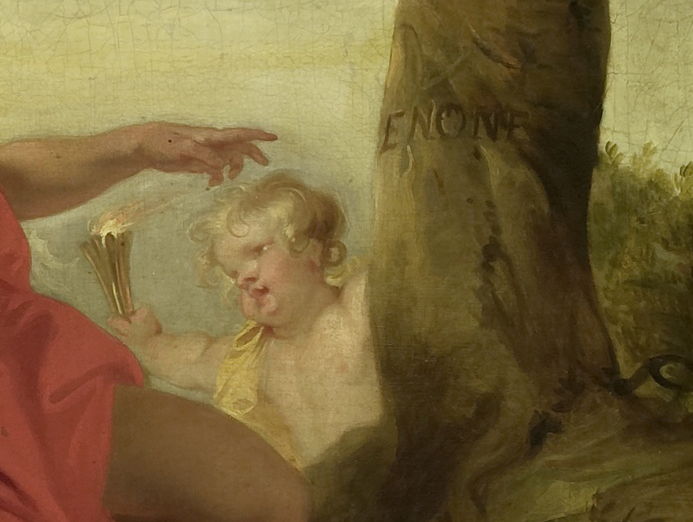
Even in classical times, it was apparently common practice for lovers to carve their partner’s name into the bark of a tree trunk to mark their love. It’s possible that accounts of Paris doing this ensured the practice was propagated through the Middle Ages, and into the Renaissance.
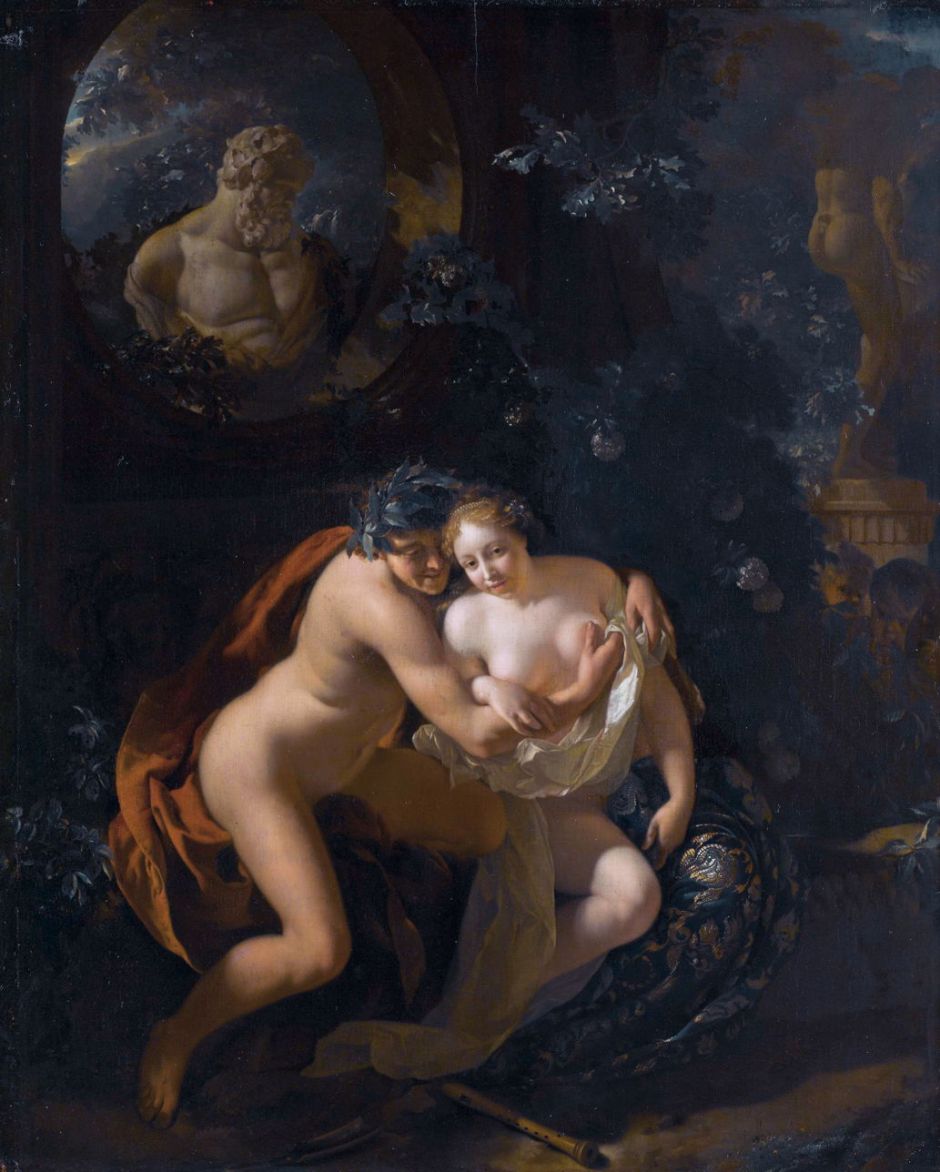
The couple’s physical relationship was also celebrated as being particularly intense. Here Adriaen van der Werff’s Amorous Couple in a Park Spied upon by Children, or Paris and Oenone, of 1694 makes that clear. As a shepherd, Paris went everywhere with his pipes, here depicted as an instrument resembling a modern recorder.
Oenone had two great strengths apart from her beauty: she foretold the future, and could heal sickness and injury. She foresaw that Paris would abandon her, and that he would bring destruction to the city of Troy, the second such prediction.
When their son Corythus was still young, the gods chose Paris as the judge of the beauty contest known as the Judgement of Paris, one of the most popular mythological subjects for paintings. In the course of that, Paris either seduced or abducted Helen (‘the face that launched a thousand ships’), and returned with her to Troy, where he was restored as King Priam’s heir and the prince of that city. Oenone was abandoned with her son, the scenario envisaged in Ovid’s fictional letter.
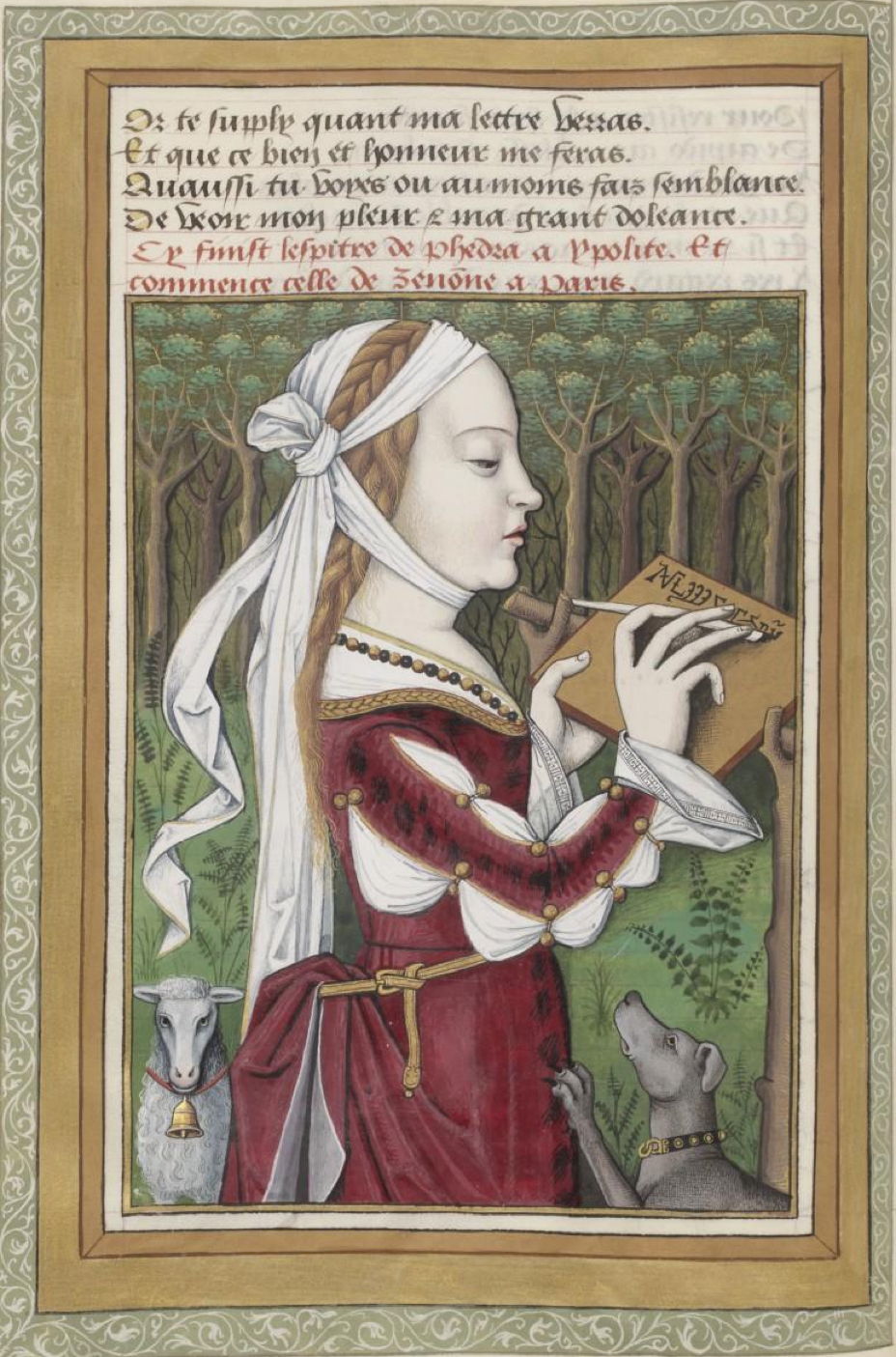
During and after the Renaissance, Ovid’s Heroides were highly popular. Robinet Testard’s beautiful illustrative miniature for a translation made by Octavien de Saint-Gelais in about 1520 shows Oenone (fictionally) writing the letter that Ovid published in around 20 BCE.
Oenone’s role in history/myth wasn’t over yet. Late in the Trojan War, Paris was severely wounded by a poisoned arrow from Philoctetes. Helen left the city and travelled to the slopes of Mount Ida, where she found Oenone and pleaded that she returned with her to heal Paris of his wounds. Oenone refused.
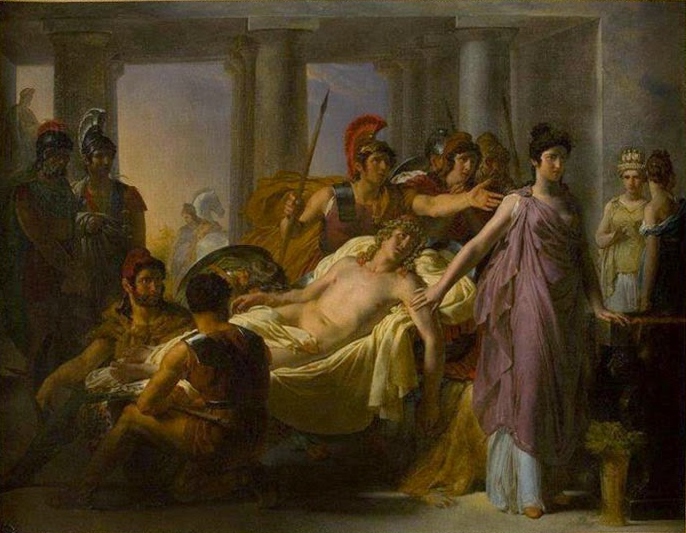
This story was set as the subject for the prestigious Prix de Rome in 1816. Although Léon Cogniet didn’t win it that year, his painting of Oenone Refuses to Rescue Paris at the Siege of Troy (1816) is one of the few surviving works to depict this scene.
After this refusal, Oenone was overcome with remorse, and changed her mind. However, by the time she had returned to Paris, he had already died. In her grief, Oenone committed suicide, possibly by throwing herself on Paris’s funeral pyre.
Millet would no doubt have been aware of this story, and familiar with Ovid’s account in Heroides. But why should he paint not Oenone herself, but a group of women responding to a reading of her story?
I think the answer lies in Alfred, Lord Tennyson, who wrote two poems about Oenone. The first in 1829 was slated by the critics, and he revised it. However, Millet’s painting is dated from about 1883, well before Tennyson wrote his second version in 1892, the year of the poet’s death.
It’s amazing how much history and mythology there can be in a single water fountain. I wonder how many of the recent incumbents of the White House know the full story of the memorial just outside, of Butt and Millet, Tennyson, and the link right back to Oenone and the fall of Troy?
References
Wikipedia on Oenone.
Wikipedia on Frank Millet.
Wikipedia on the Butt-Millet Memorial Fountain.
Credit
The excerpt from Ovid’s Heroides letter 5 is taken from the English translation by James M Hunter, published here. Its use is acknowledged with gratitude.

